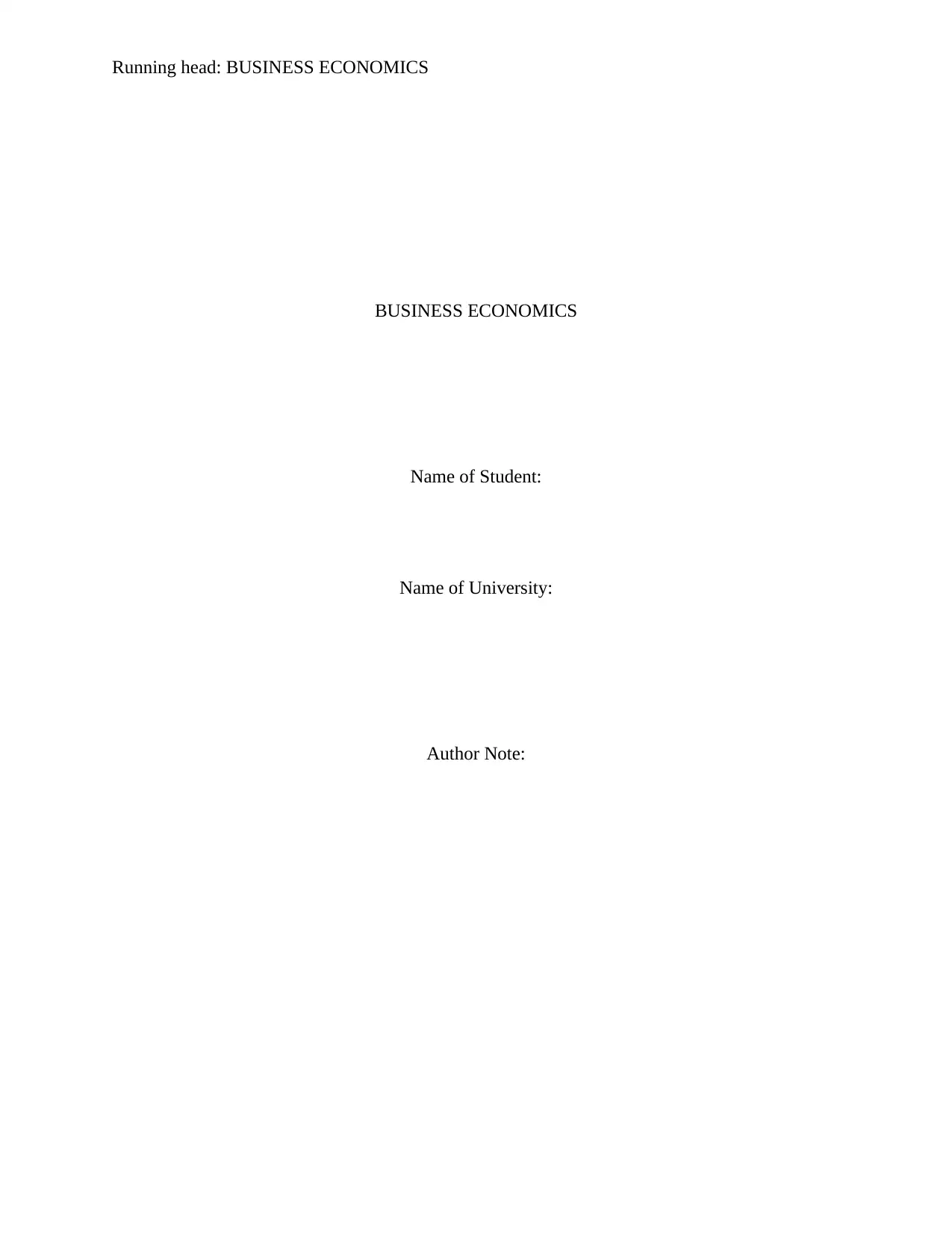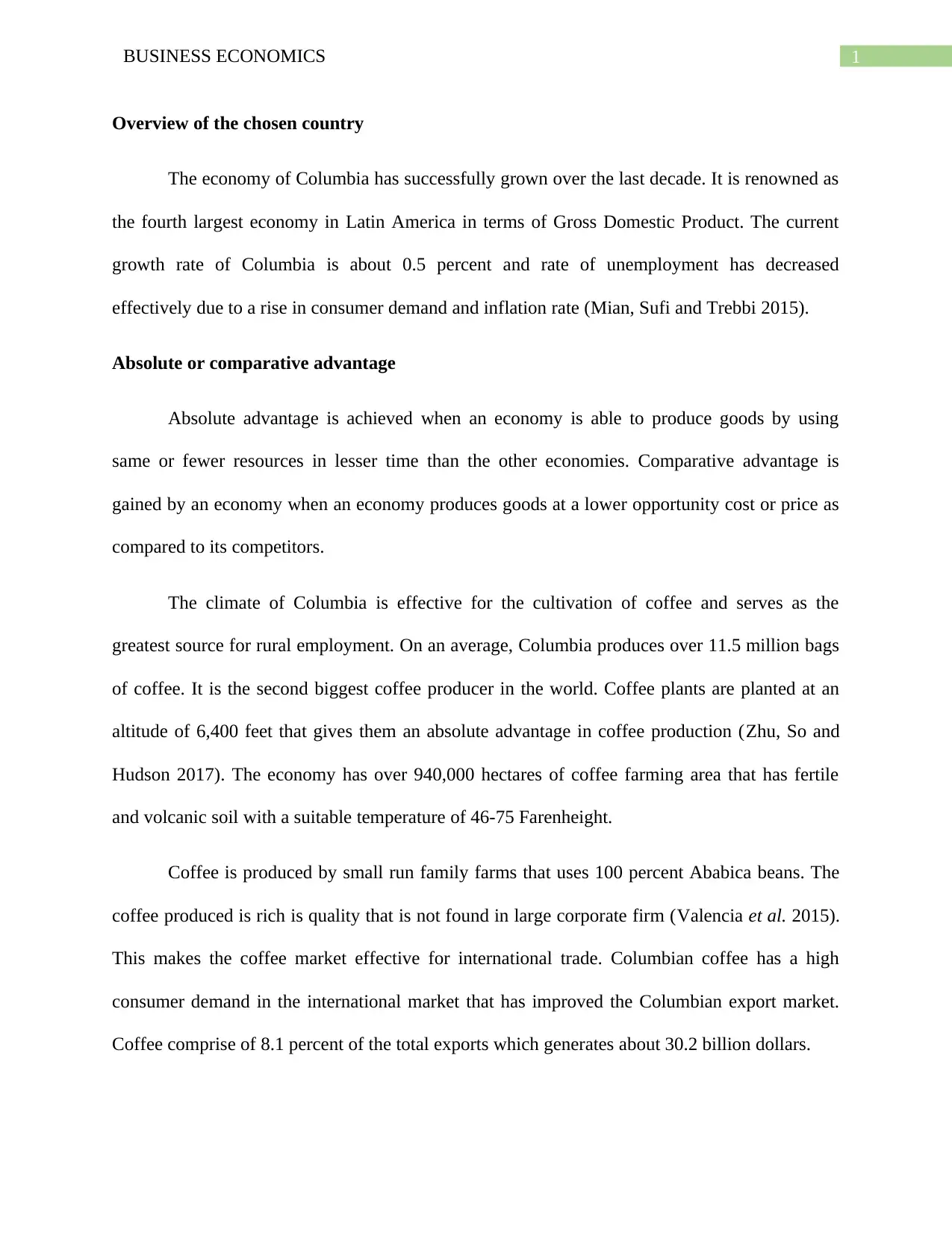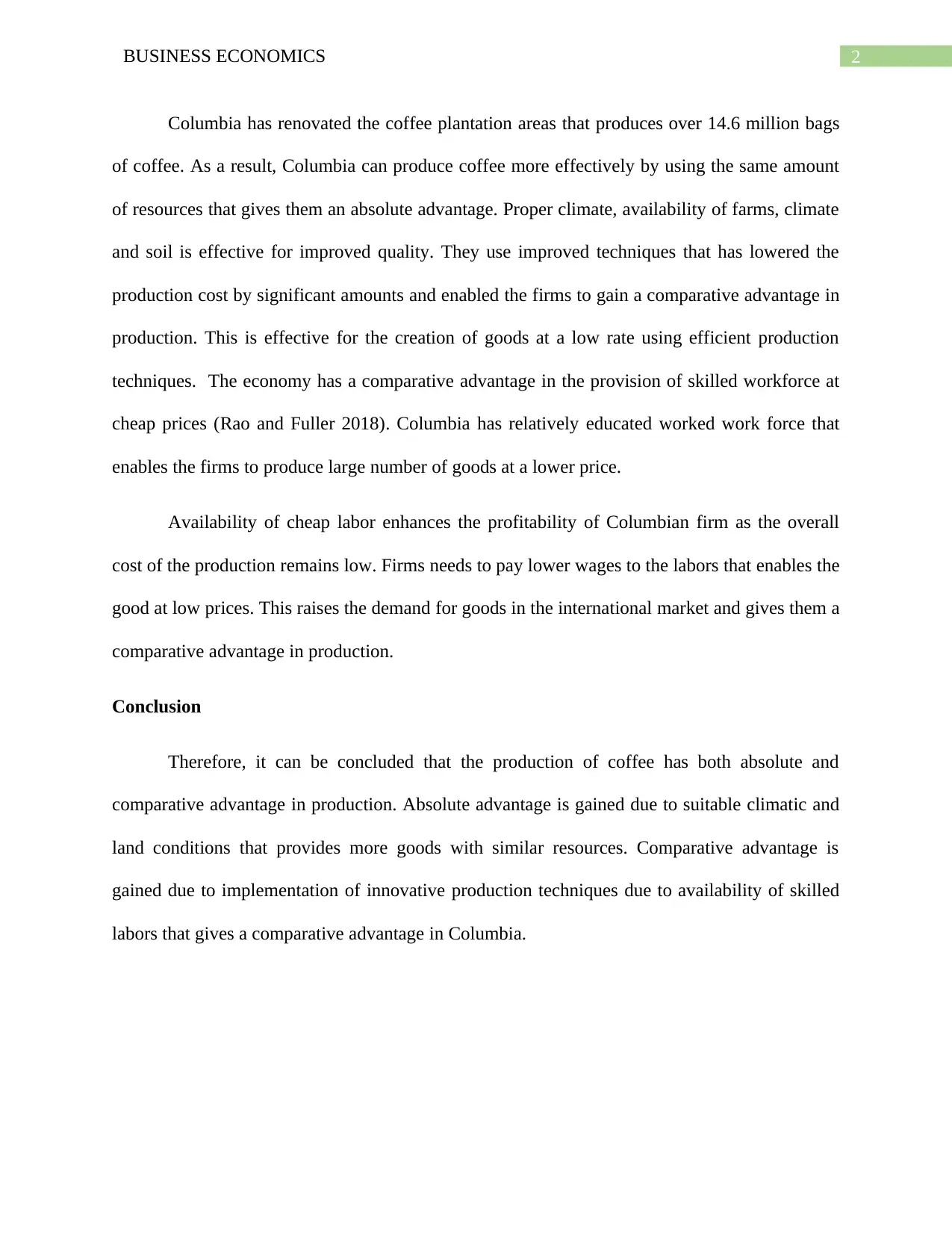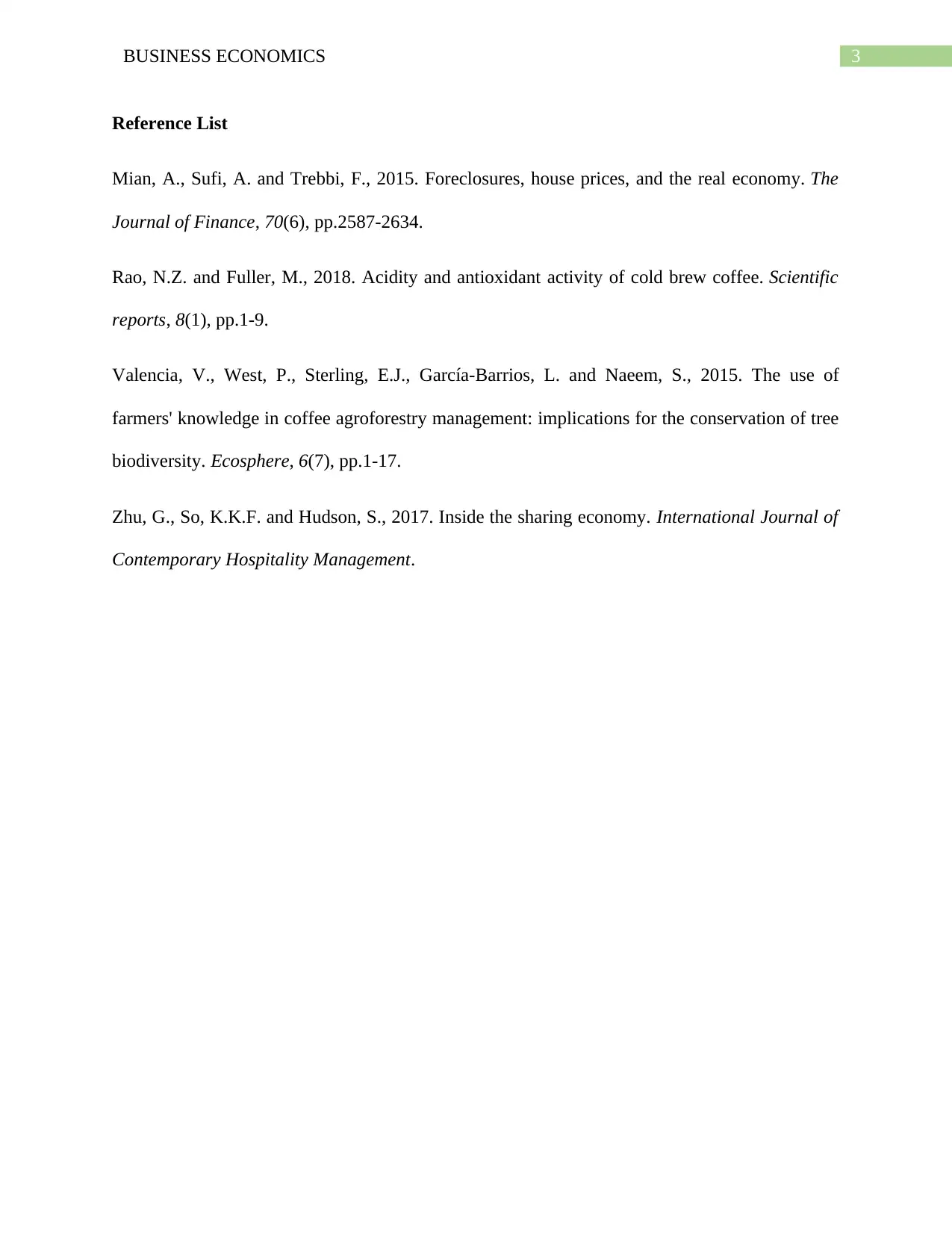Business Economics Report: Columbia's Economic Advantages Analysis
VerifiedAdded on 2022/08/08
|4
|738
|17
Report
AI Summary
This report examines the economy of Columbia, highlighting its growth and position as a major Latin American economy. It delves into the concepts of absolute and comparative advantage, using the coffee industry as a primary example. Columbia's climate, fertile soil, and skilled workforce contribute to its absolute advantage in coffee production, allowing it to produce high-quality coffee with the same or fewer resources. Furthermore, the report discusses how Columbia gains a comparative advantage through efficient production techniques and a relatively educated workforce, leading to lower production costs and increased competitiveness in the international market. The analysis concludes that Columbia's success in the coffee industry stems from a combination of both absolute and comparative advantages, making it a significant player in global trade.
1 out of 4











![[object Object]](/_next/static/media/star-bottom.7253800d.svg)